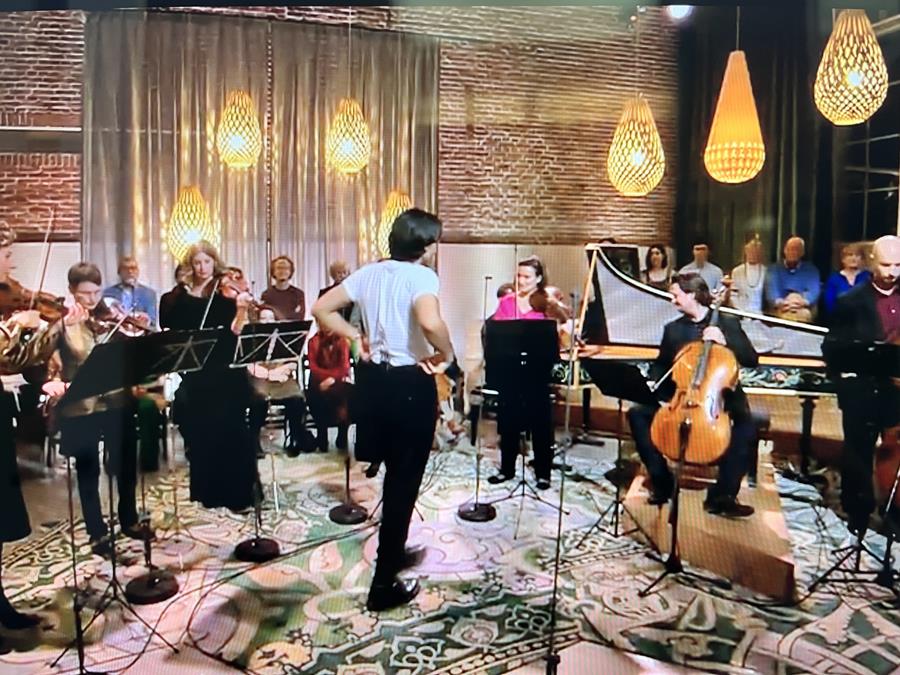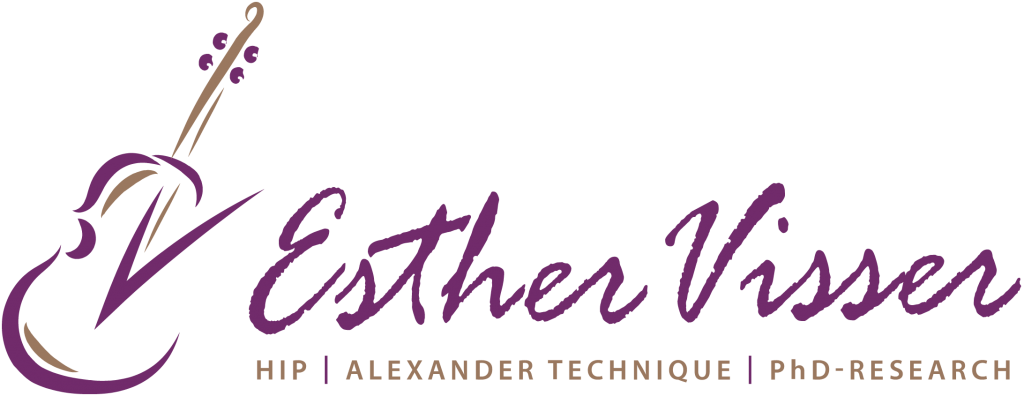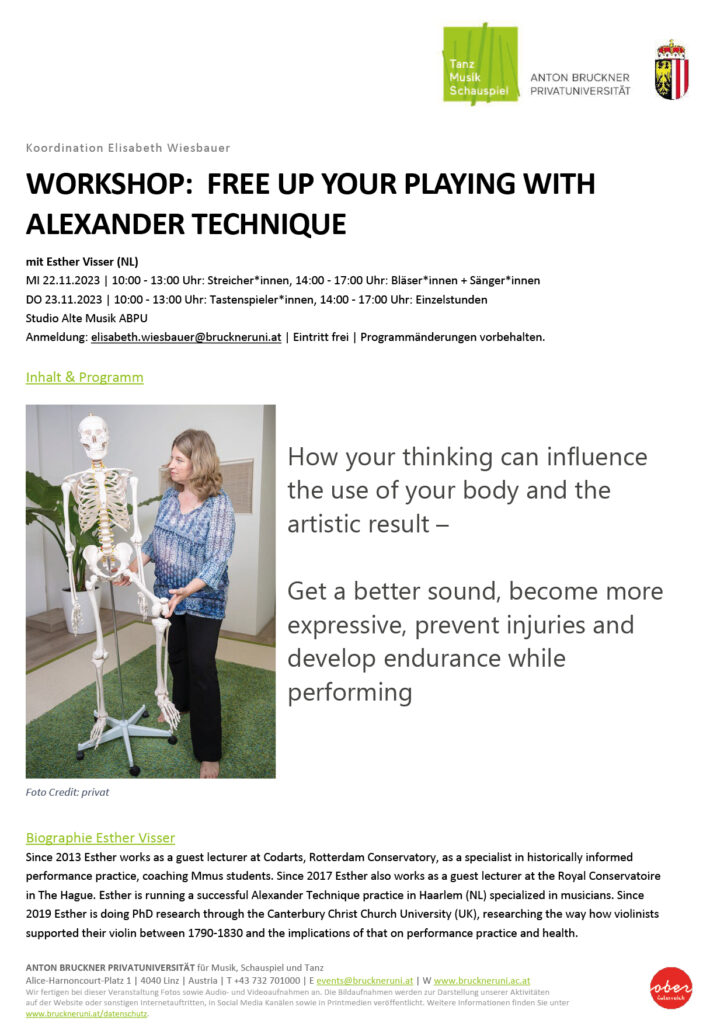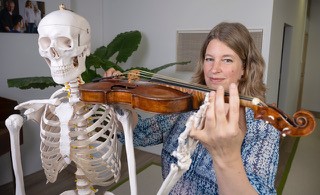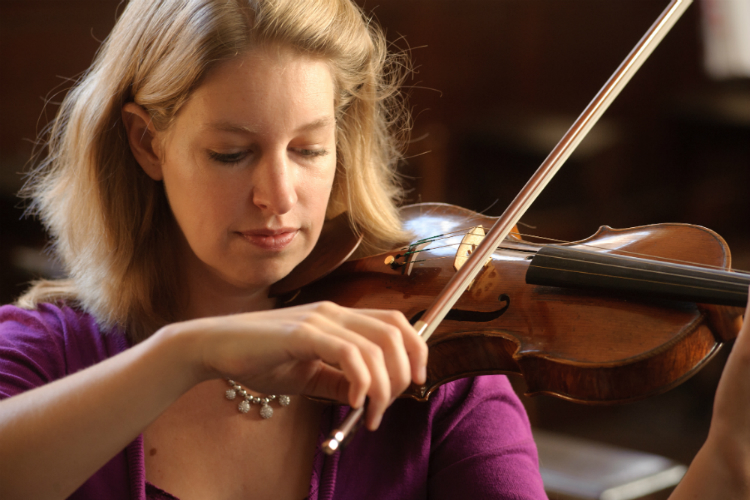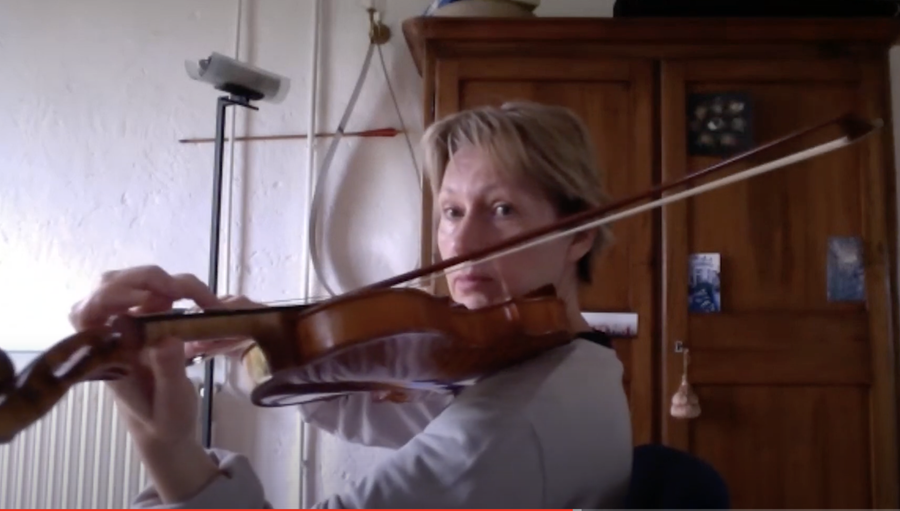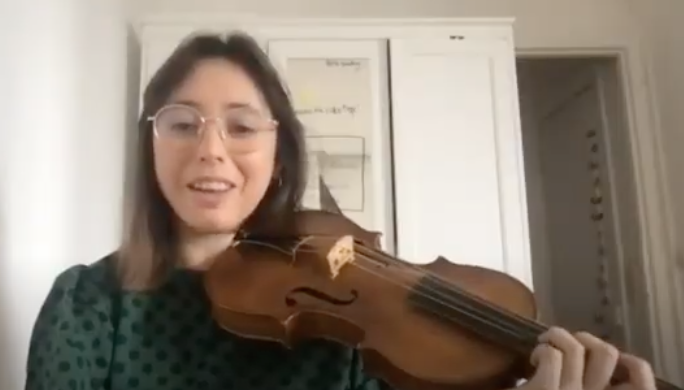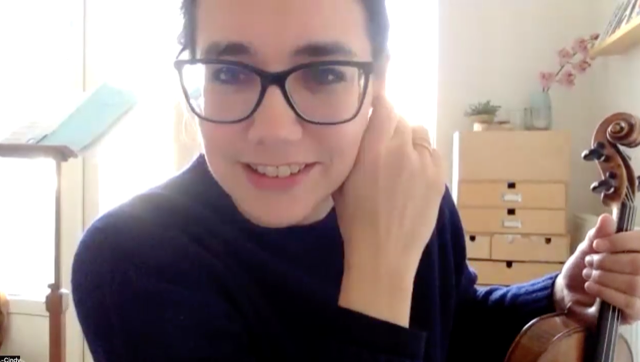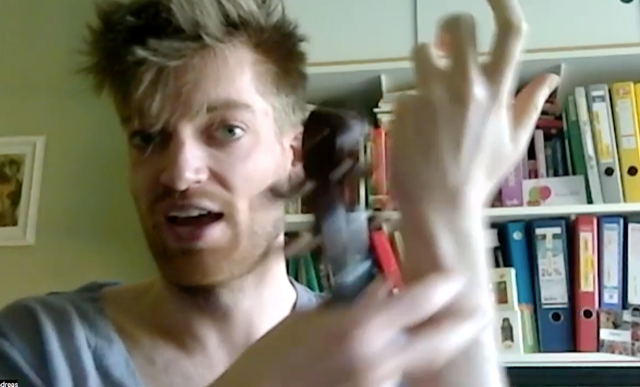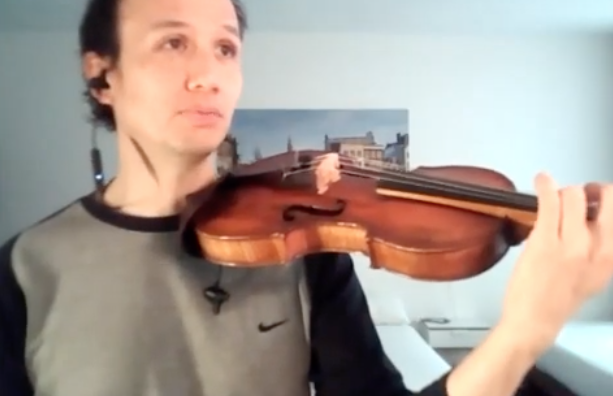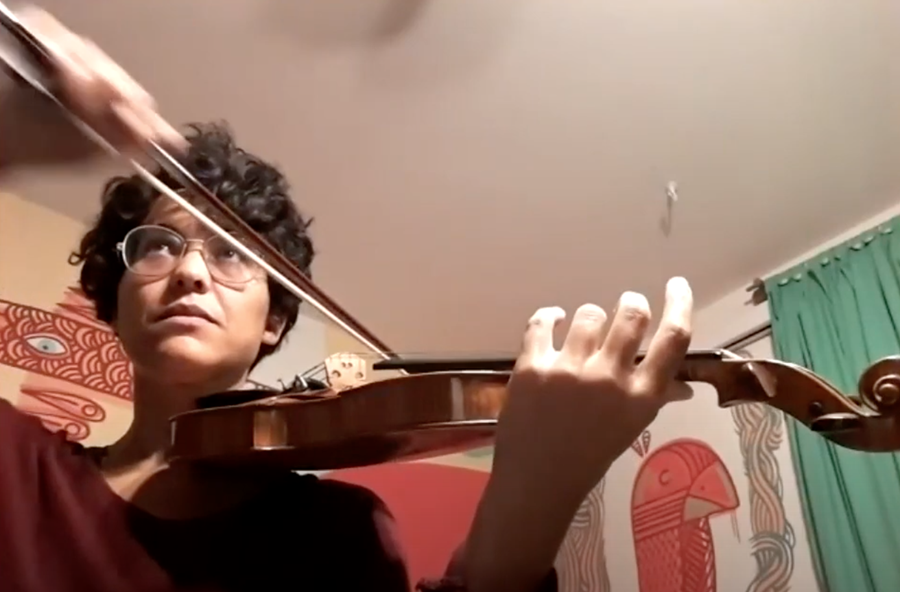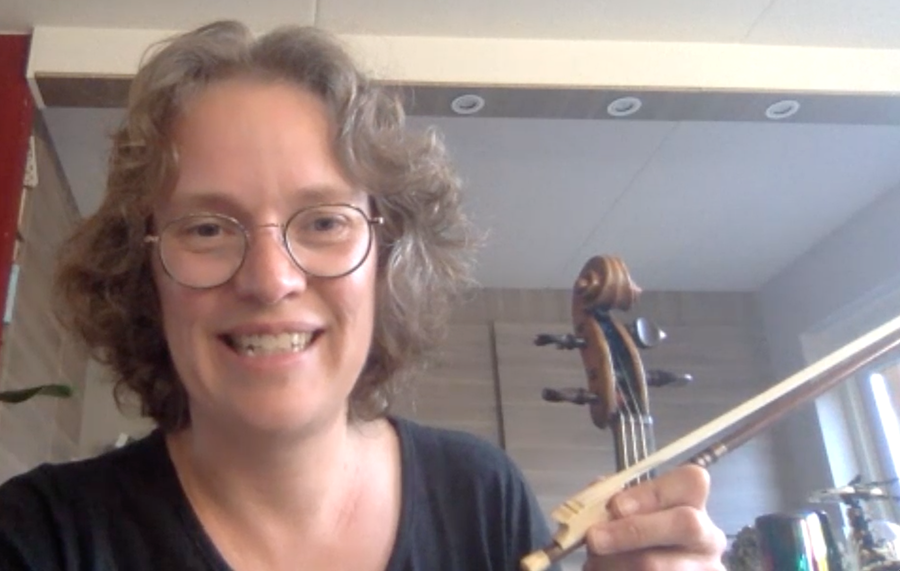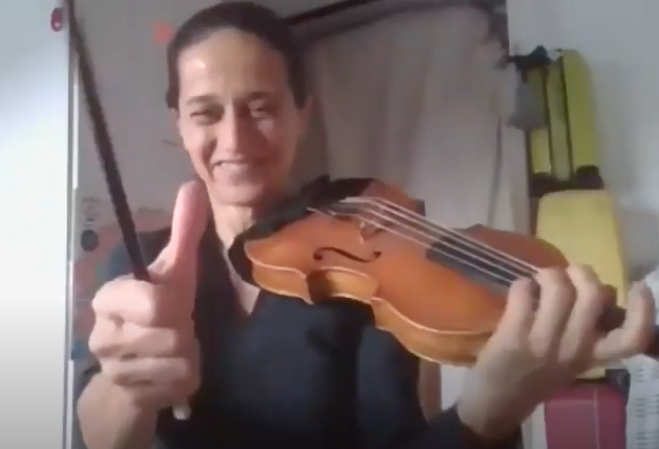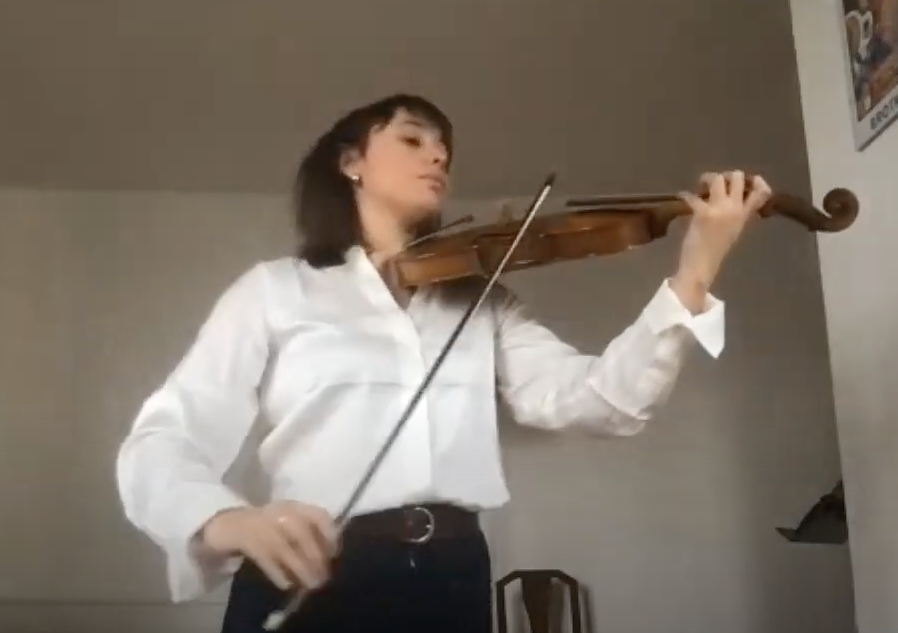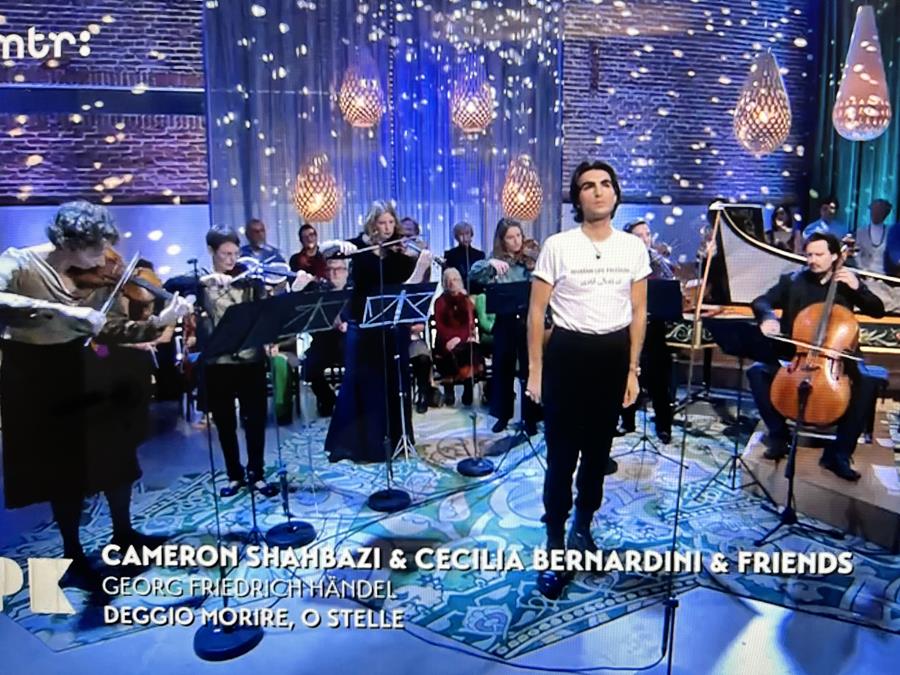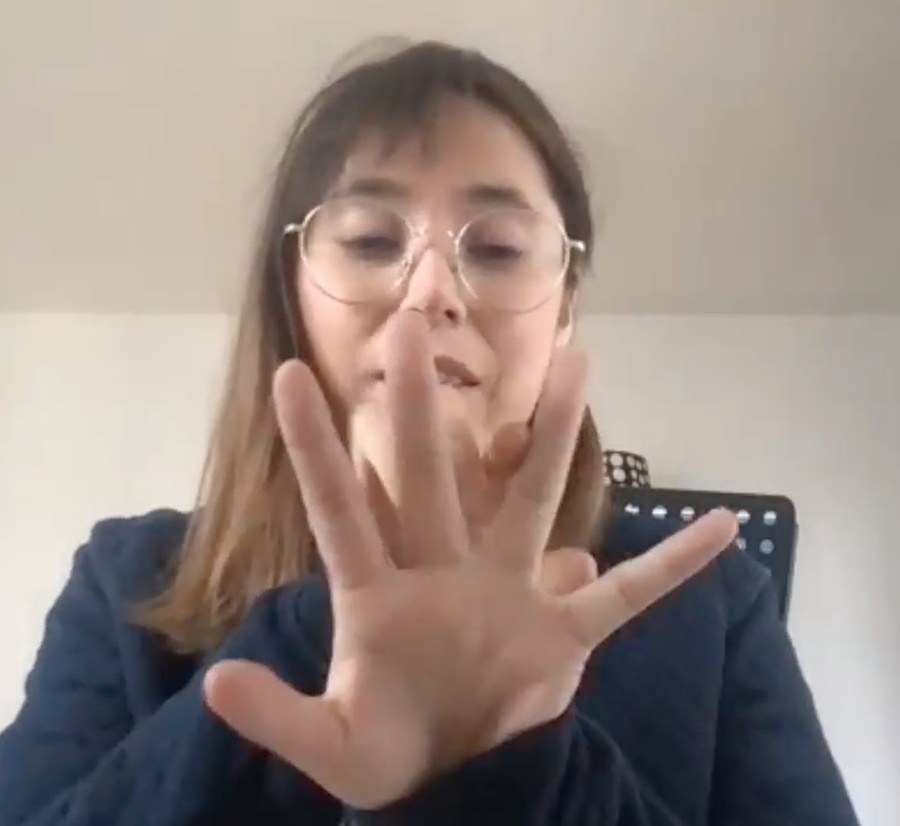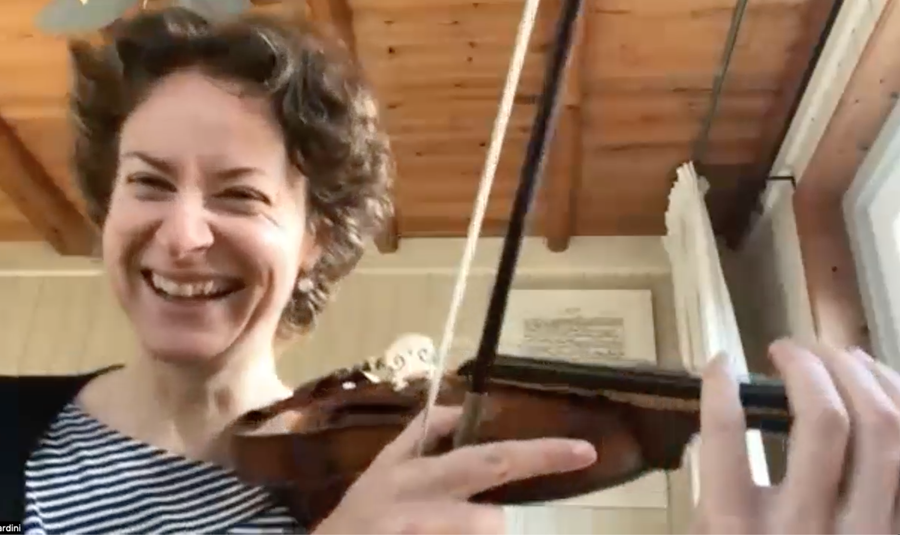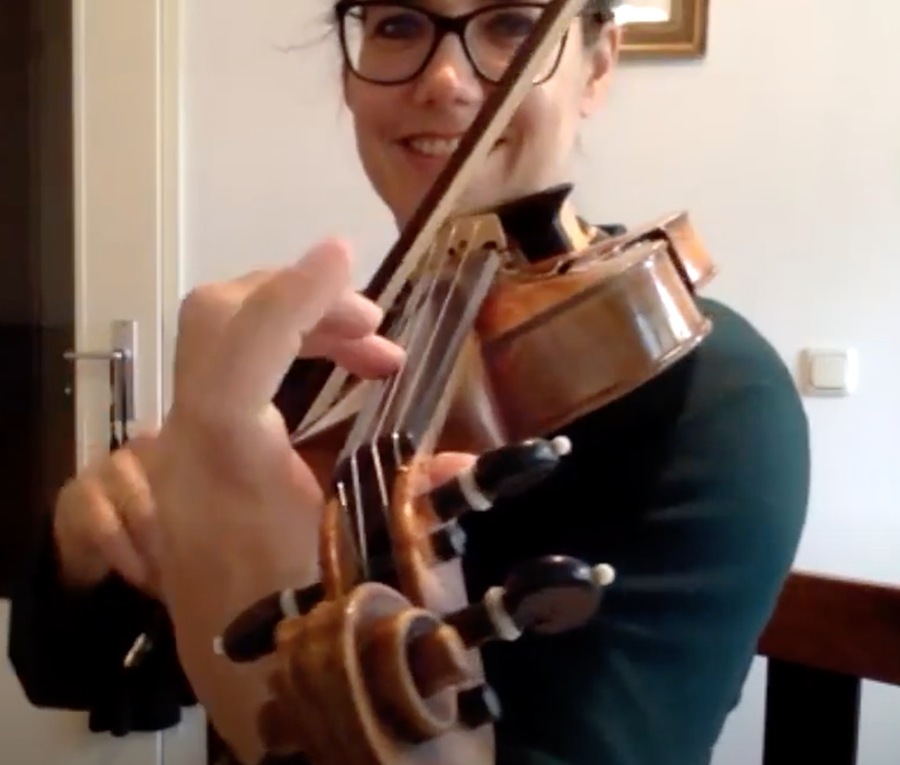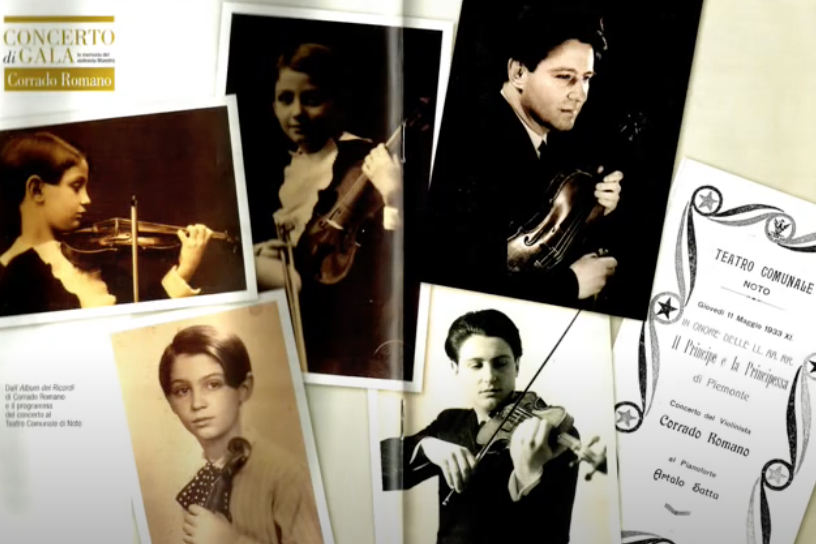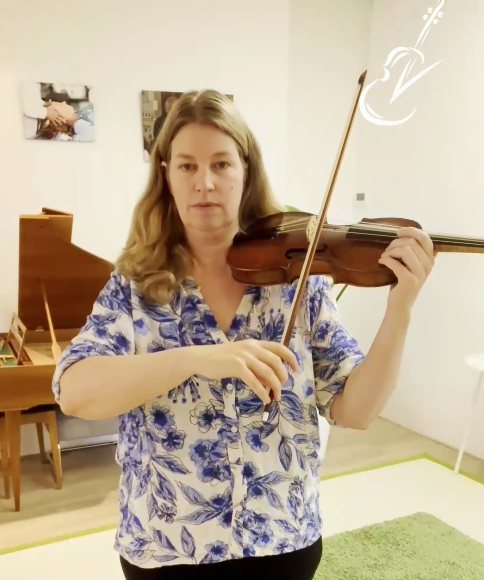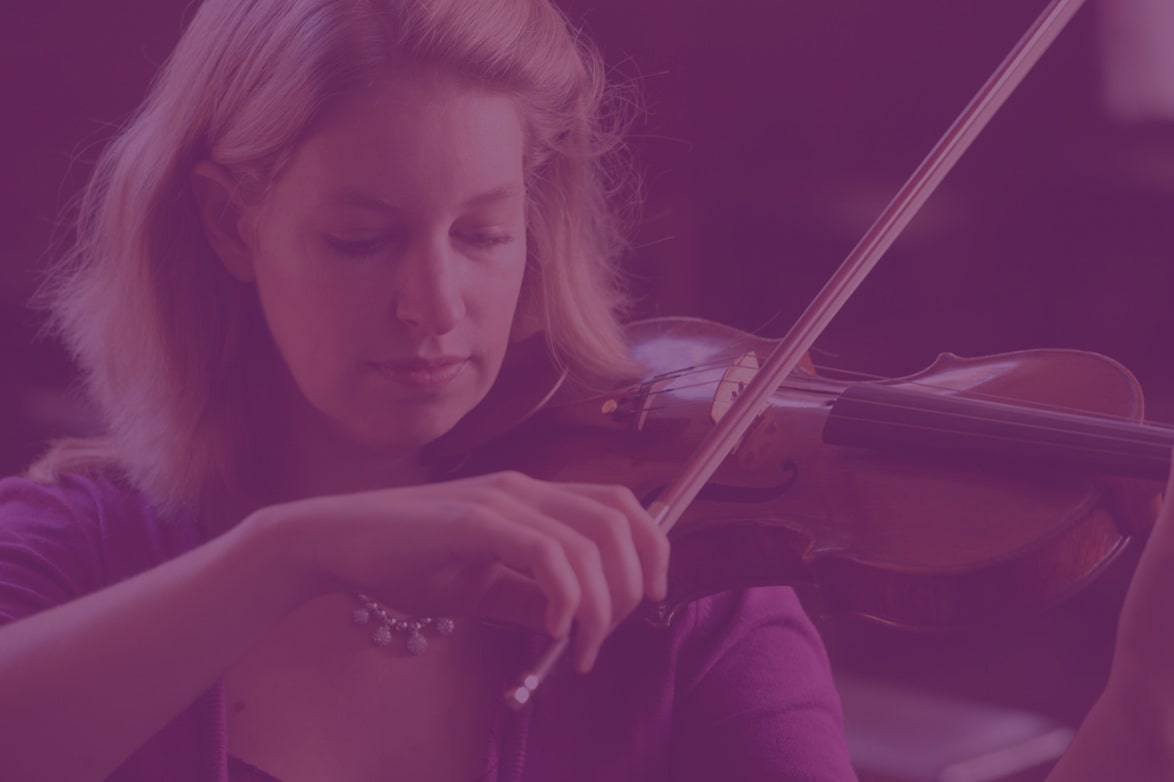
The eleventh week of the experiment
Hi everyone,
This is the eleventh week of my experiment on playing without a shoulder rest and / or chin rest. Here are some updates and some feedback.
Thank you for sending me your videos, it’s really important for my research. Please keep doing it. We are at different stages, not everyone is in week 11 now, that is completely fine. Everyone can do it in their own tempo. It’s a busy time for everyone, just before Christmas, so don’t hesitate to continue in Januari if that is better for you.
Again, some more new participants joined as well, welcome to Camilla and Eliza! Many people already filled out the entrance survey. Thanks. If you didn’t do it yet, please do so before you start the lessons.
If you know more people who like to join, for example starting in January, this is still possible through my website. If you missed the newsletter last week, you can still read it here. There is a collection of past newsletters at my website available too.
Please be welcome to join the Zoom session next Wednesday 11.00 AM (Dutch time) if you want… Just to meet or to ask some questions. Would be nice to meet up. You can watch Zoom sessions back on the login page where the video lessons are, as well.
About the Xmas holiday
It would be best if you could continue with the 10 min per day during the holiday, so your learning process will not have an interruption. But if you prefer to take a break, this is fine too, just please let me know, no problem! Our zoom sessions will continue tot take place, also on Wednesday December 28th and January 4th, and after that. Some people already informed me, that usually Wednesday mornings are not possible for them as they have to work, but in the holidays they are free and able to join! So this can be a nice chance to meet up if you are too busy otherwise. Looking forward!
“I think your research is very important and I think you are very right on all the points you raised. I am so thankful that your talk about this, because almost every musician has unhelpful habits.”
– Jun Keller, Vienna Philharmonic Orchestra,
participant in the experiment
Eleventh Zoom session
Last Wednesday we had an eleventh zoom session with some participants of this experiment. It was lovely. If you want to watch it: I recorded the session and there is a link to it in the login page under the video lessons.
Nadi Perez-Mayorga was the first to join the session and I was laughing when her screen opened, as I saw little papers on the wall behind her stating ‘Think you head going towards the ceiling and at the same time dropping your weight through the ground’, ‘Imagining two eyes on my back’ and ‘The panoramic view’.
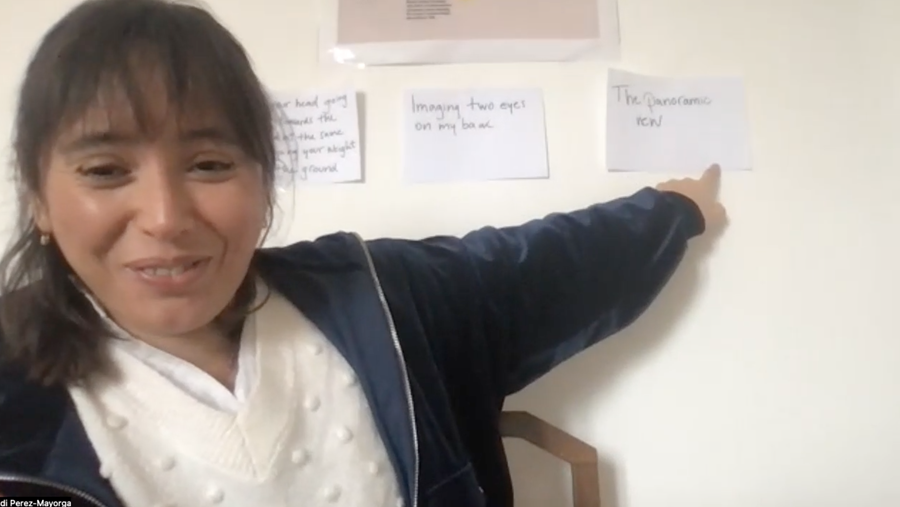
She told us that every day she picks one of them and keeps thinking about it while playing. So nice! The most difficult one for her is the ‘Panoramic view’… to stay in touch with the surroundings while playing… and probably for most of us!
Her question for this session was about playing in orchestra: there are so many things going on at the same time. We talked about the panoramic view and also panoramic hearing in orchestra. Nadi told that last week she was in Paris leading the second violins, in the opposite direction of the first violins. It is a difficult position, as she sometimes turned towards her group and also wanted to see the concertmaster and conductor, and you don’t want to sit with your back towards the audience. Her body was not comfortable. She was nicely opening herself while practicing at home, but now felt her chest closing again while moving towards her group. She kept moving her violin position and it was tiring for her left shoulder.
I suggested that it is very well possible to lead the group without turning towards them, leading them with your back and with your body movement. They do’t have to see you bow if your body language is clear, I think. If you want their attention you can turn your head (without taking the violin and whole back turning to the right), that is the nice thing if you can play without the chin holding the violin. I like it very much to have a leader who really uses his sitting bones, is very grounded and clear in his body movements. It’s much easier to follow.
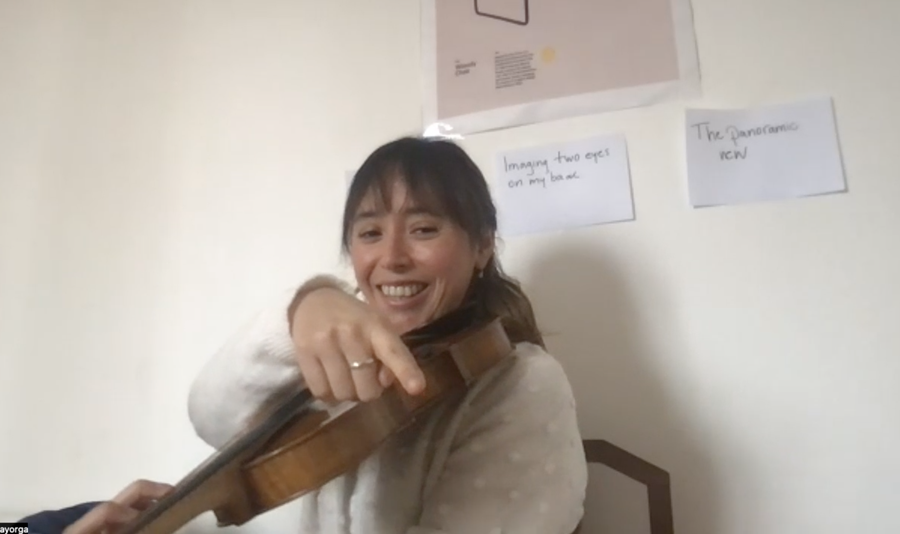

So we need to be careful not to sit too much on the left sitting bone, also use the right sitting bone and keep the left shoulder open, when leading the group in that position. Another danger is lifting the sternum (breastbone) too much, especially if the conductor stands high up. We talked about thinking the lower back backwards, in a non-doing way.
We did an exercise together, which I learned from Peter Buckocke, the (former) Alexander Technique teacher at the Royal College of Music (and double bass player) in London. It works with the idea that there is a pencil on your head, with brushes towards the ceiling and there is a canvas on the ceiling. You start painting a big circle on the canvas but without losing the contact with your sitting bones and everywhere nice equal round sides of the circle. Then you make a smaller circle and smaller, until no one can see you making the circle. It helps to stay fresh and involved while waiting in orchestra and start in a well directed way at your next musical entrance, in stead of collapsing while waiting and having to ‘restart’ again.
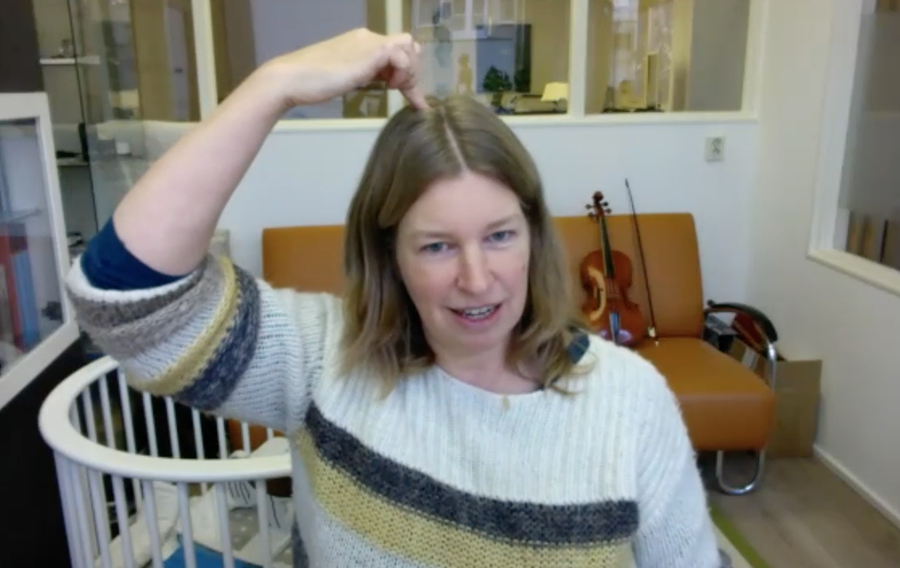
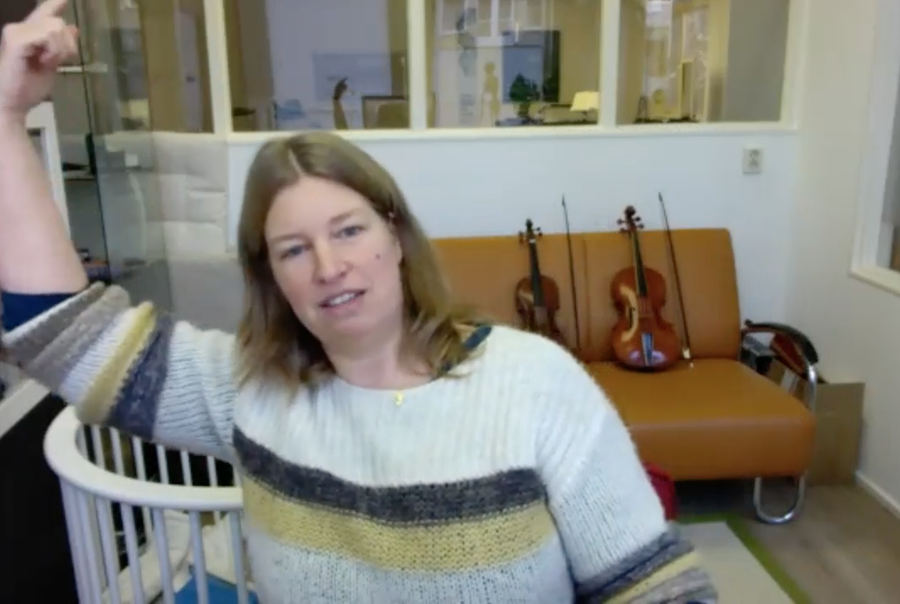
In the mean time Nicolette from London also came in and she also joined the exercise. Soon after that, Maaike Aarts from The Netherlands also joined our zoom session. Maaike is a freelance violinist and Alexander Technique teacher, just like me, living in Amsterdam. She is mostly playing modern violin, but also interested in the use and sound of gut strings. She has been playing with a Wolf shoulder rest first, and then with a collarbone rest for some years, and then she started to play without using a shoulder rest, inspired by the concertmaster of The Netherlands Chamber Orchestra who is doing that, but in a very different way then we do it in this experiment. Maaike told us that she is very happy to learn new things in this experiment, she feels like a beginner again, it’s a challenge, which she likes. She just was sick last week and could watch back all 9 zoom sessions! Wow!
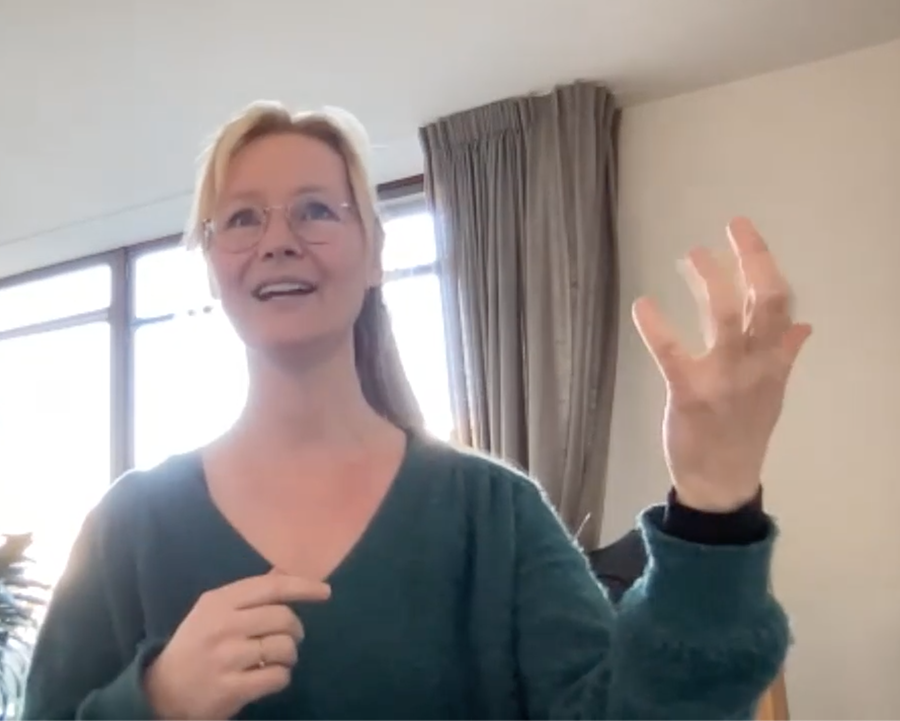

Maaike told us that in the last weeks during our experiment she discovered that she has been doing the following movement with her thumb for a long time:
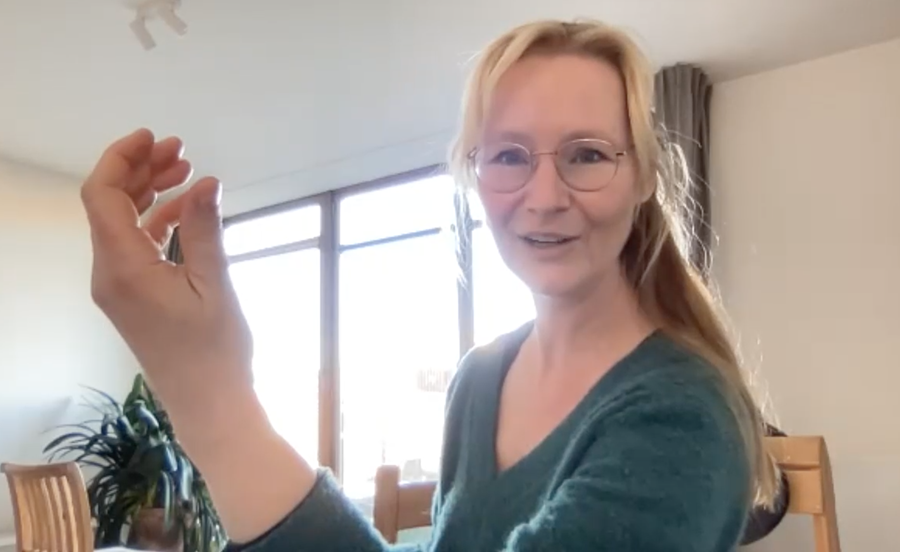
In stead of the round ‘C shape’, which was really new to her:
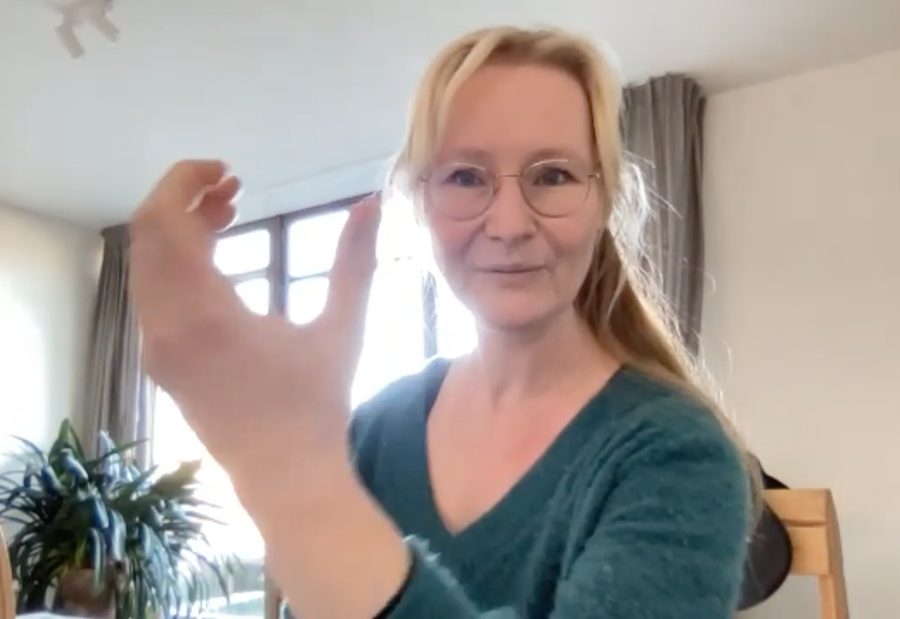
Maaike noticed that she needed the widening and softening of the mouse (base) of her thumb much more than before, thinking it away from the pinky side. She discovered during our experiment that she even also was narrowing that part of her hand while holding the stair railing or opening a peanut butter jar, for example.
I (Esther) recognize this from my own process. My thumb was kind of ‘weak’ first (I think from playing with shoulder rest), my base joint was falling inwards. I think intuitively you can already see that that kind of use for the thumb (also in daily live) is not meant to function like that, which Maaike shows here under. In the first picture the base joint of the thumb is falling ‘in’, in the second picture it is open and wide, in the third picture you see in which direction in spreads out.

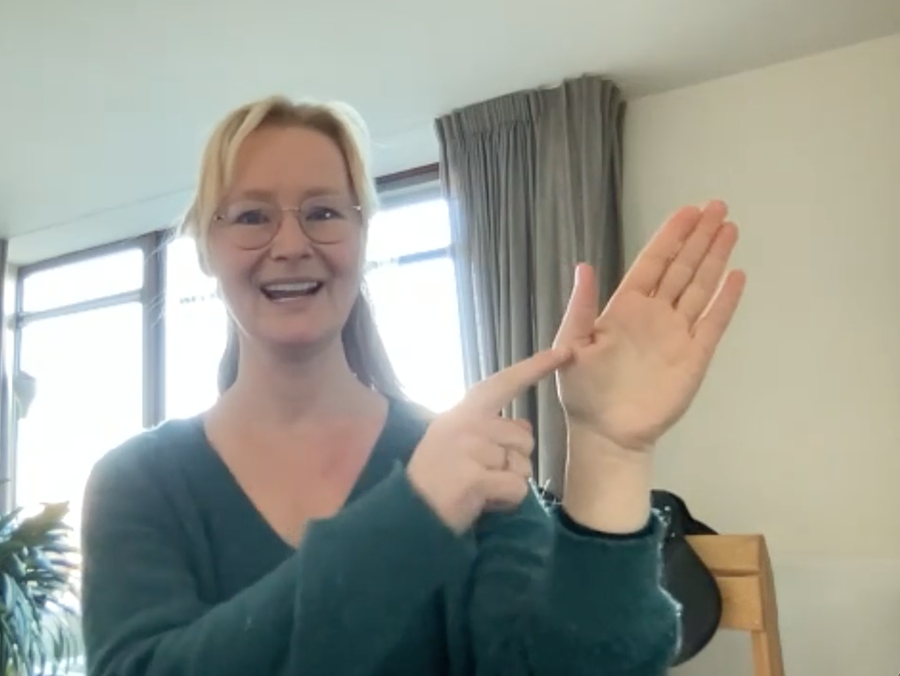

By using the thumb as a support of the violin, the mouse of the thumb is reminded of it’s proper function and starts to be more actively involved again, in a healthy way, in stead of being there passively. It makes the base of the hand opener and broader, and softer at the same time.
Nicolette added that in the Feldenkrais method there is an exercise called ‘the hanging hand’ where they discover the function of the thumb. You touch the fingers one by one with the thumb and observe how the thumb does that.
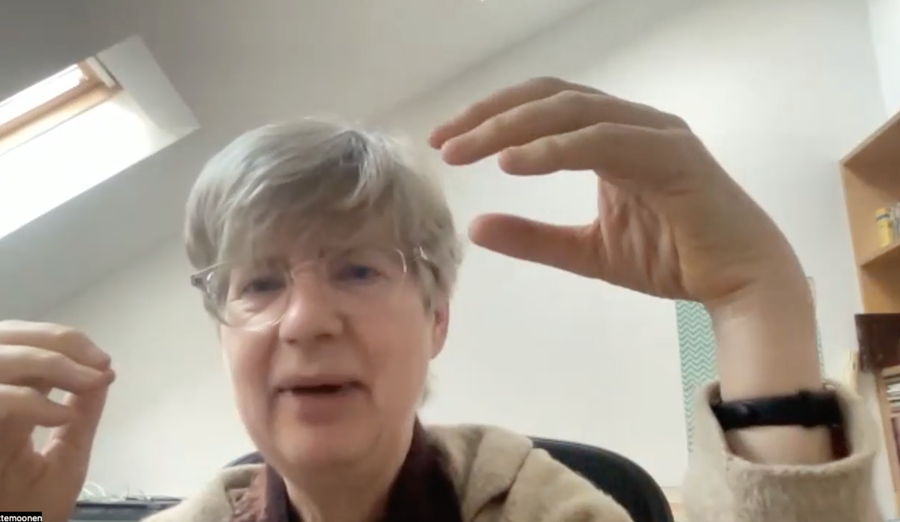
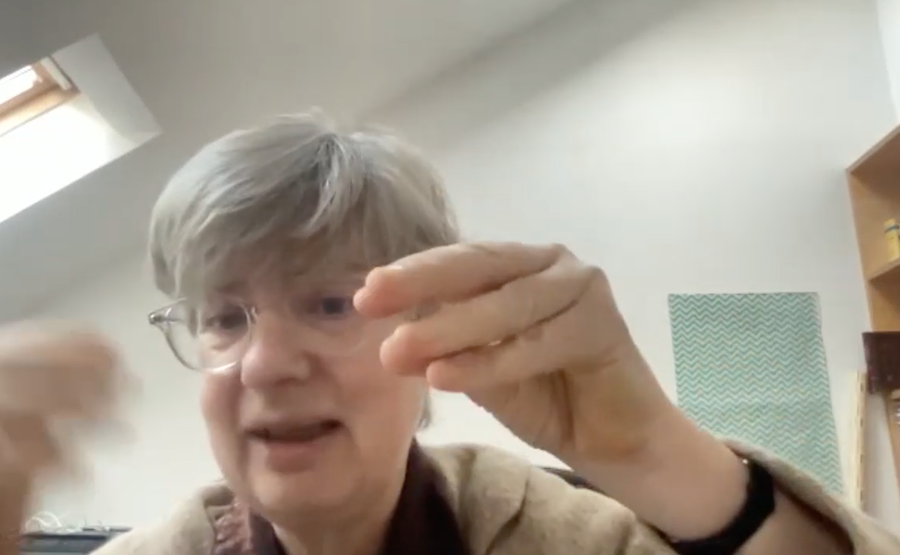
If you don’t use all joints, like she is showing in the picture above, and what was Maaike was doing with her thumb before, is not giving the thumb it’s proper function. That gives tension everywhere. It’s about discovering how we are made, in fact.
So in this experiment, we are practicing together to give the thumb it’s proper function back. In that way the hand and in fact the whole arm, shoulder and body will be much happier, function better and also give a nicer sound. A lot of shoulder problems can be solved by this.
We also made another nice discovery with Maaike. We had been discussing before, that Maaike did not seem to be able to move here violin to the right with leaving her 4th finger on the string. I (Esther) am able to do that, and both of us didn’t understand what made the difference. Here you see how far Maaike was coming and how far I was coming…

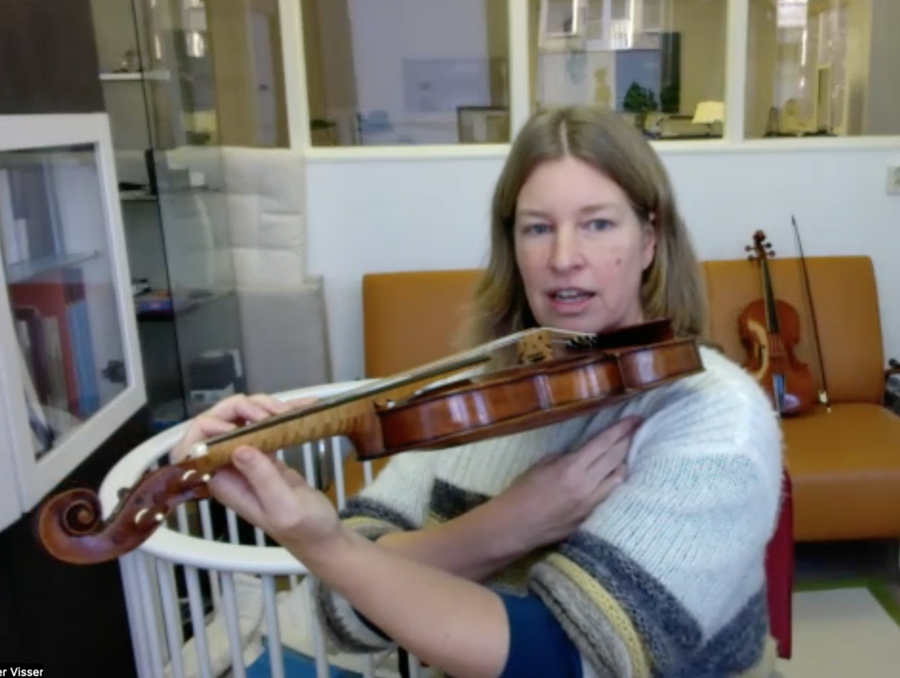
Nicolette reminded us that the place that needs to let go in that movement is the joint where the collarbone meets the sternum (see picture below)…and of course Maaike knew that rationally, but she was thinking her shoulders widening and did not allow space in that joint. When we realised that, Maaike suddenly could bring her violin completely to the right without any strain in the left hand! We had a good laugh and it was an interesting insight!
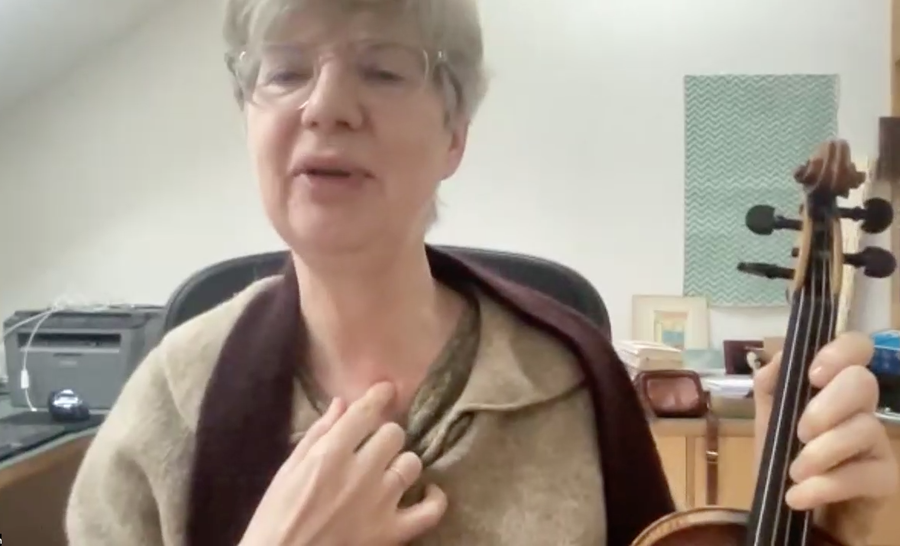


We also spoke about how loud the violin is, and that the general sound ideal seems to become louder and louder in the last 50 – 70 years. We get trained like soloists, in conservatory, and then apply this way of playing in orchestra. So many musicians have hearing problems. Nicolette added that is has something to do with respecting our organisms, we seem to have lost this, it is the same principle as with the climate problems. I (Esther) think that there will come a stop to this development. We can not keep playing louder and louder and the pitch of the A going higher and higher. This can not be endless. There are already some very nice violinists in the Dutch modern orchestra’s who start to use plain gut strings again and rethinking about this loud way of playing. I see a development in the other direction, which is very positive, I think. I had a nice (1 hour) interview with Mathieu van Bellen (new concertmaster of one of our Dutch modern orchestras) about this subject, for example. He is playing without shoulder rest and using gut strings again. Nadi also added that a friend of her form the Deutsche symphony orchestra also changed to plain gut string and asked her advice how to play on them. However, sometimes you get strange combinations… for example conductors asking for period wind instruments but the combine them with string who use metal strings, which not really makes sense.
We also spoke about the new developments in gut strings. I recommend ordering strings in Italy from Corde Drago (‘set corde per Violino barocco‘ with a silver wounded G string, or the viola set). In my experience they stay much beter in tune and they sound wonderful, made with new historical insights in the production process, which gave big improvements in the last years.

The we spoke about why (and how) the sound of the violin changes when placed on the collarbone… do we hear our own sound in a different way, is the skeleton resonating with the violin together? Would it be possible to objectively measure the different sound? It’s too much to describe here, if you are interested please listen the zoom session back, it was really interesting.
We also agreed that it’s really not a good idea for ‘tonmeisters’ to place the microphones close to the musicians, but much better to place them in the concert hall, further away.
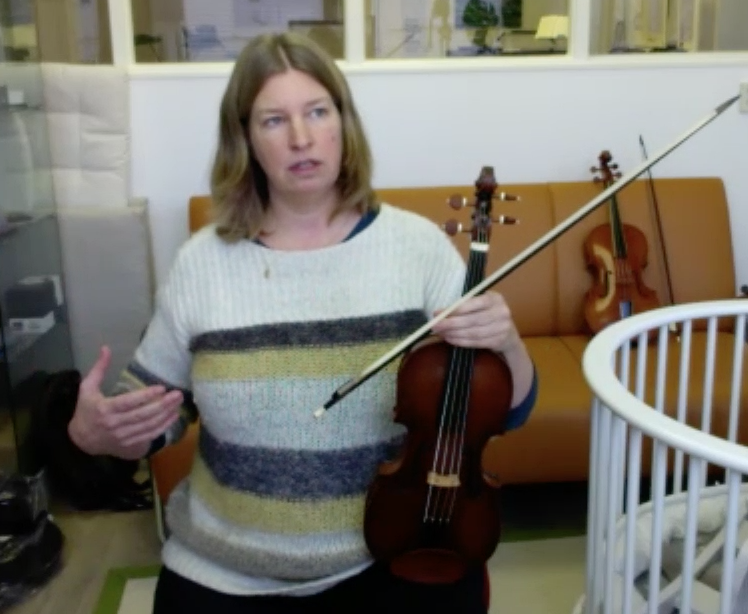
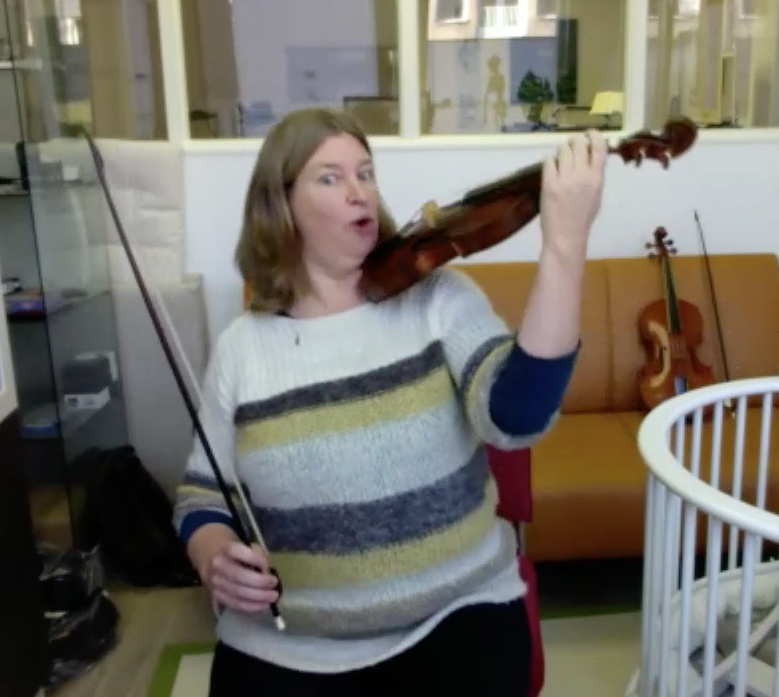
We then spoke about the problem some violinists and violists have, that their bow will touch their right leg, while playing on the highest string while they play sitting on a chair. Especially when musicians play with their head touching the chin rest all the time, we often see them lifting the violin by bringing up the whole back and sternum as a whole (see picture below, this is how NOT to do it ;-)…).
Maaike, Nicolette. Nadi and me all agreed that that really is not a healthy solution for the back and we discussed some better ones (widening the legs, or slipping down with one leg for a while). Especially for people with long legs and a short trunk this is a problem.
I (Esther) am still wondering what exactly happened with myself in this regard. As I used to bump into my leg when I was at conservatory (modern violin), but suddenly this problem disappeared. Thinking back, I think that it disappeared from the moment that I took my shoulder rest away and my violin was placed in a more horizontally position (flatter), laying on the collarbone. In that way, the bowing arm ends up higher above the knee and the problem is not there anymore.
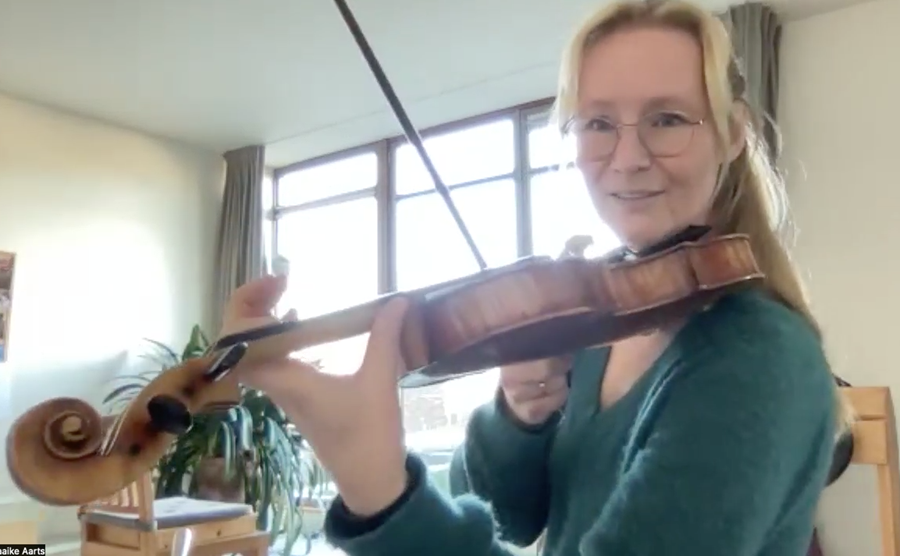
We then worked on Maaike her glissandi (lesson 5), especially the way back, and how to support the violin with the base joint of the first finger during taking the thumb back. And how not to let this change your pitch. We developed an exercise how to support the violin for a while with the base joint and make circles with the thumb. It takes some time and practice for this to feel secure, it’s really about balance. For people who are also struggling with that, I recommend to watch the recording of this zoom session (11) from around 1h’40m.
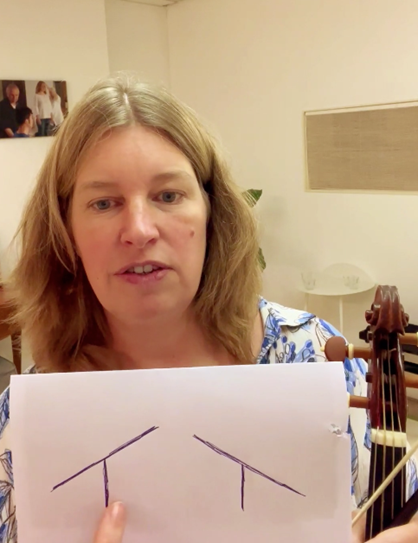
Some encouraging remarks for lesson 11
For those who are there already: In lesson 11 we are applying the things we developed in previous lessons to playing section C of Paganini Caprice nr 2 (6 bars). The most important thing is to stay aware what your left thumb is doing, are you still in contact with it? Can you use panoramic view, balance on your feet, thinking up, while playing these bars? In addition to these, part C also is a bit about how to reach high notes. When you keep supporting the violin with the thumb, the third finger can function as stand of a of ‘seesaw’, where your hand can make a vibrato movement on the wrist, bringing the little finger easily towards the high note (see picture above). I am looking forward to see your experiences in using that. Don’t worry if some notes are out of tune for example…it’s just for me to see the process, it does not need to be perfect, at all.
Please take your time
It is important that everyone in this experiment enjoys the curiosity we have, and take part in a joyful and playful way. In that way, we learn the best. Don’t try too much to ‘do it right’…and don’t hurry. If you need more time, just let me know, keep me informed, and we take a bit longer. No problem!
I am wishing you a Merry Christmas and a quiet time with your family. Below you see my 2 year old son Benjamin, listening with his stethoscope to the heartbeat of a toy :-)…
Many of you will have concerts going on… I am playing a concert on December 26th at the Westerkerk church in Amsterdam… Enjoy!
Best regards, please let me know if you have questions,
Esther Visser

